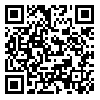BibTeX | RIS | EndNote | Medlars | ProCite | Reference Manager | RefWorks
Send citation to:
URL: http://journal.itrc.ac.ir/article-1-140-en.html
It has already been shown that in rate-constrained broadcast channels, under the assumption of independent Rayleigh, Rician and Nakagami fading channels for different receivers, the user capacity (i.e. the maximum number of users that can be activated simultaneously) scales double logarithmically with the total number of users. However, to achieve the aforementioned result, it is assumed that channel state information (CSI) is perfectly known to the receivers. In practical situations, the receivers do not have access to the true CSI and they only know estimated channels. In this paper, the effects of channel estimation is analyzed on the user capacity of rate-constrained broadcast channels. In particular, the Minimum Mean Square Error (MMSE) channel estimation scheme is considered and the effects of this estimation method on the user capacity is investigated. Under the assumption of commonly used fading channels for different receivers, it is shown that the user capacity still scales double logarithmically; however, there is a gap depending on channel estimators accuracy between the upper and lower bound of the user capacity. The bound will be asymptotically tight if the variance of the channel estimator remains constant.
| Rights and permissions | |
 | This work is licensed under a Creative Commons Attribution-NonCommercial 4.0 International License. |




